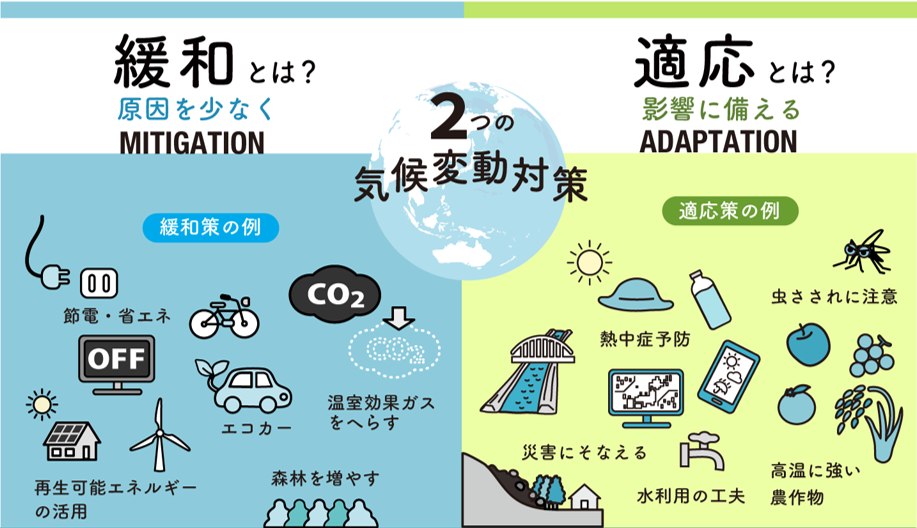Note: This website was automatically translated, so some terms or nuances may not be completely accurate.
COP29 Participants Reflect: Japanese Corporate Technologies Gaining Attention in Climate Change

Web Dentsu Inc. News Editorial Department
"Abnormally hot" summers are being recorded year after year... This is happening all over the world. It has been announced(※1) that the global average temperature in 2024 is expected to be over 1.5 degrees higher than pre-industrial levels, making it the hottest on record.
Amid climate change driven by global warming becoming an urgent challenge for humanity, the international conference "COP29" (※2) to discuss climate change countermeasures was held in Azerbaijan. Where does the world's awareness of the issues lie now? What did each participant feel? Companies that attended COP29 share their experiences and the passion they felt on the ground.
SHIBUYA COP
A session event (co-hosted by Shibuya Future Design and SWiTCH) held immediately after COP29 to share and discuss the latest global information on climate change. This fourth iteration adopted the same theme as the Japan Pavilion at COP29: "Solutions to the World." This article covers the content of Talk Session 1 at SHIBUYA COP 2024: "Latest Updates from Companies Participating in COP29 Azerbaijan."
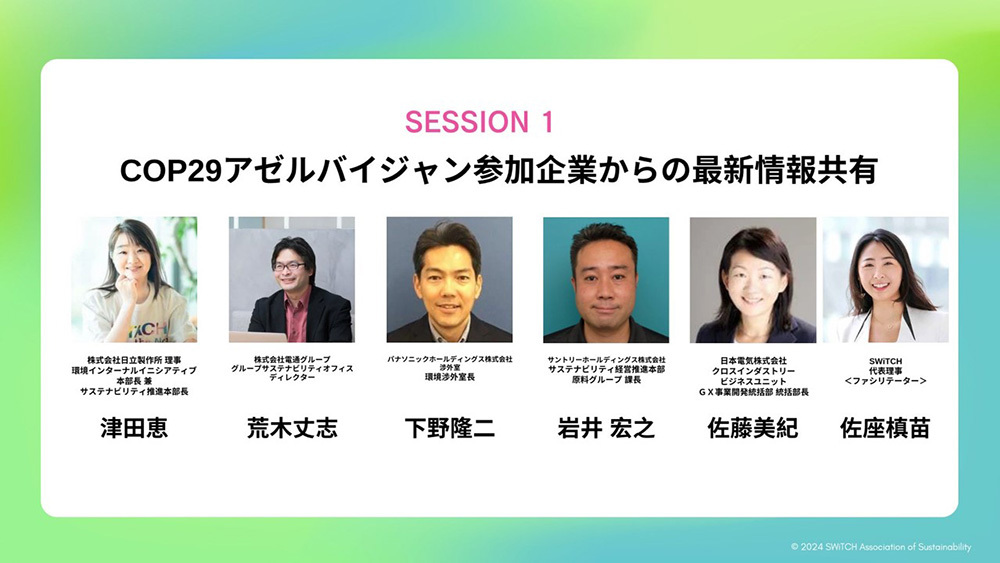
*This article is edited and supplemented based on the talk session content.
A key feature of the Japan Pavilion is its "corporate participation model"
Saza: First, I'd like to hear about your reasons for participating in COP29, what you communicated on-site, and your overall impressions of the event.
Details of participating companies' exhibits can be found here
https://www.env.go.jp/earth/cop/cop29/pavilion/exhibition/display/
Tsuda: I am responsible for environment and sustainability at Hitachi, Ltd. Hitachi is working toward the digital transformation (DX) of social infrastructure to simultaneously achieve planetary boundaries (※3) and well-being. At the Japan Pavilion, we showcased a real-time flood simulator that predicts where flooding will occur when it rains, and technology that balances and controls computational loads between data centers in different regions. Since it was an interactive booth, we could hear feedback from various stakeholders as they actually tried the exhibits.

Shimono: I oversee all environmental communications at Panasonic Holdings. Let me explain why private companies like ours participate in COP and our objectives. We have participated since COP24 in 2018. Initially, our goal was to enhance our presence at COP, and later, exploring business opportunities became part of our objectives. Furthermore, with the launch of "Panasonic GREEN IMPACT," we participate with the stance of utilizing COP as an international rule-making forum to communicate globally the significance of CO2 reduction contributions and the necessity of international standardization for these reduction contributions.
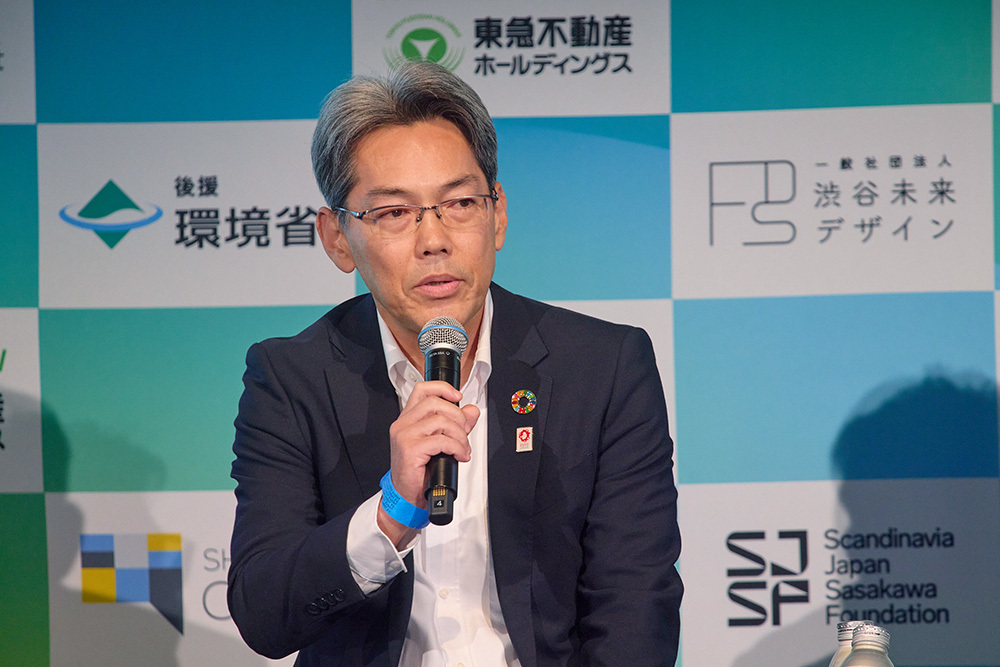
Sato: I am responsible for business development focused on climate change at NEC. This time, NEC exhibited as part of the "Adaptation Finance Consortium" launched with Mitsui Sumitomo Insurance. Currently, the world faces a critical shortage of investment in measures to avoid or mitigate the impacts of climate change (adaptation measures). To address this challenge, our activities focus on calculating the economic benefits of investing in adaptation measures to encourage capital flows into them. At COP29, we announced that by leveraging vast amounts of Earth observation data and AI technology, we can clearly visualize the effectiveness of climate change adaptation measures anywhere in the world.
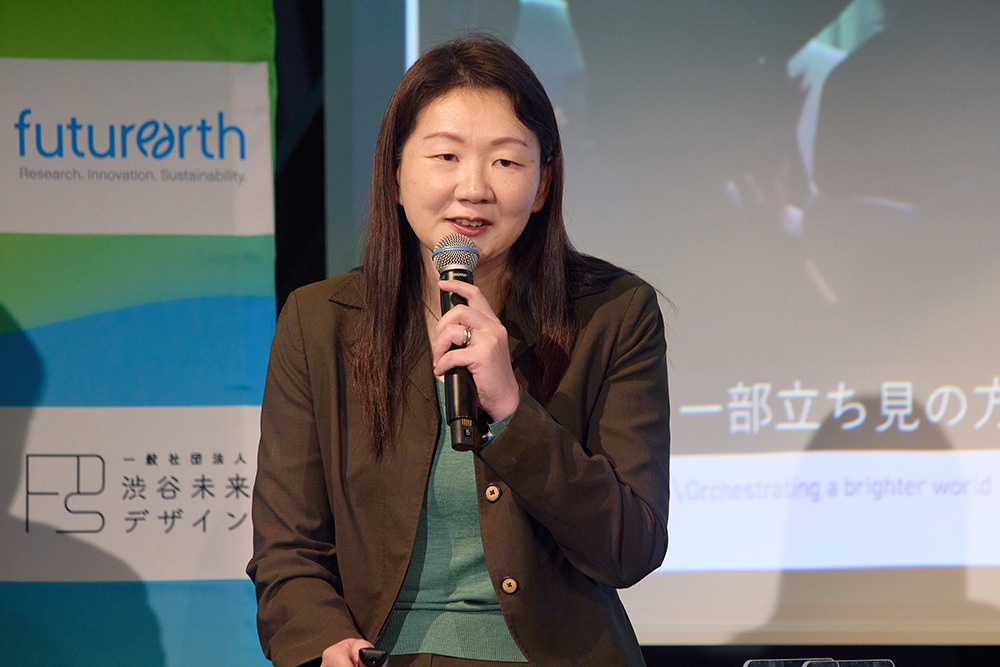
Araki: I belong to the Group Sustainability Office at Dentsu Group. I'll discuss the features of the Japan Pavilion. As mentioned earlier, the Japan Pavilion's most distinctive aspect is corporate participation in the exhibition, showcasing corporate technologies. Other countries focus primarily on seminars, so there is no other pavilion like Japan's. Consequently, the high technological capabilities of Japanese companies attracted significant attention, and the pavilion was extremely popular, drawing crowds every day without interruption.
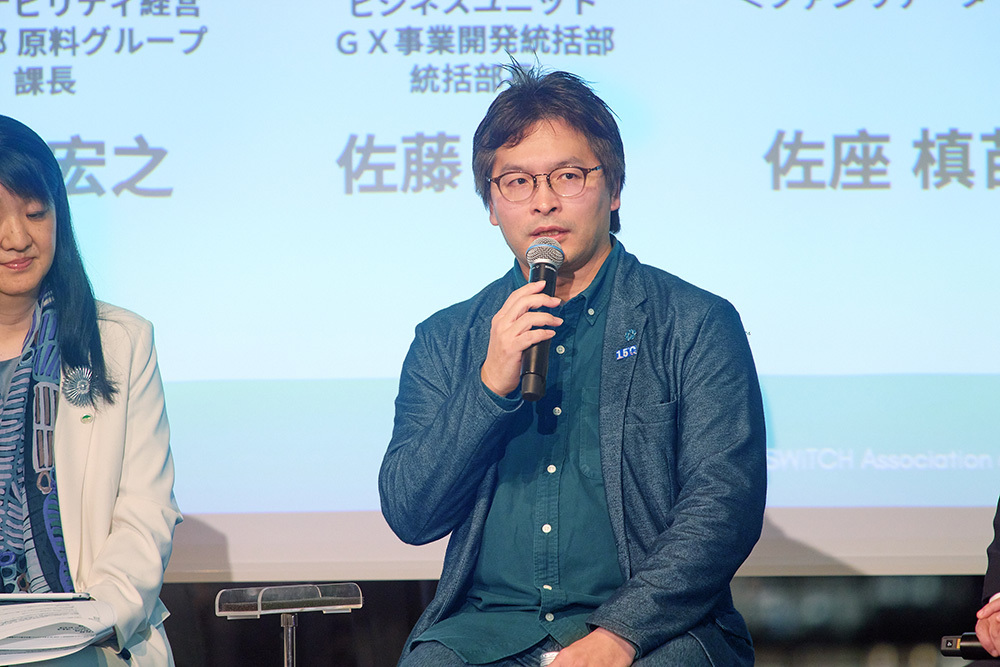
Iwai: Suntory did not have an exhibition at COP29, so we went primarily for information gathering. Attending COP for the first time, I felt a significant gap between what we typically do in our daily work and the key points and needs discussed at this international conference. The Suntory Group has set a target to reduce greenhouse gas (GHG) emissions across its entire value chain by 30% by 2030. That goal dominated my thoughts. But when I actually attended COP, I felt a very strong demand for measures to address the damage from climate change happening right now and for investment from developed countries to address it.
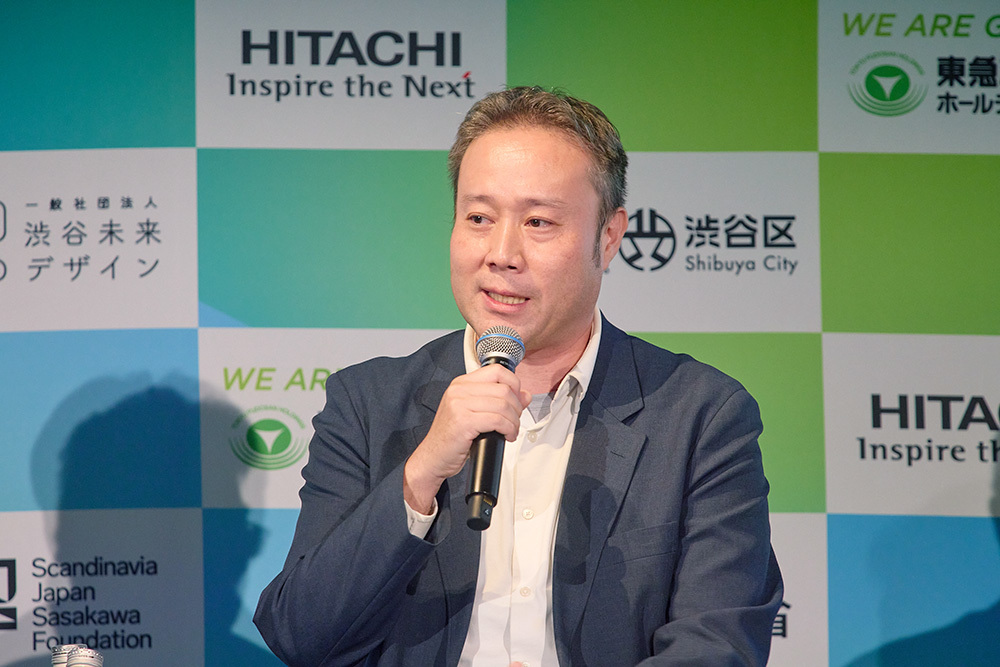
Is "Adaptation vs. Mitigation" the Keyword at COP29?
Saza: Moving forward, we'll discuss keywords frequently seen at COP29. The term I encountered most often on-site was "Pay Up." While dictionaries define it as paying the full amount or shelling out all one's money, locally it carried a somewhat rough, "Pay up already!" nuance.
On the final day of COP29, developed nations agreed to a target of providing $300 billion (approximately 46.19 trillion yen) annually by 2035 for climate action. While this climate finance target has been raised, the Global South criticizes it as "far too little, far too late." In fact, I heard firsthand from people at the venue about the current situation: "Himalayan glaciers are melting, causing floods even when it hasn't rained." For those whose livelihoods are being threatened right now, whose very means of survival are disappearing, the sense of urgency to act immediately is far stronger than it is for us Japanese. Mr. Iwai also mentioned this point. How did you feel about the issues surrounding money?
Iwai: The biggest problem is that "the amount is insufficient." However, I also sensed frustration over "how that money is used, and who decides how it's used." Developed, wealthy nations want to ensure the money they provide is used effectively, so investments inevitably gravitate toward visible projects or areas they are familiar with. On the other hand, climate change issues vary greatly from region to region. Therefore, the recipients of the funds want to decide how to use it, as they understand the problems best. I felt the frustration lies in the gap between these differing perspectives that remains unbridged.
Saza: NEC has been promoting "digital technology to visualize the impact of investments in climate change countermeasures" locally. What are your thoughts on this, Mr. Sato?
Sato: I think we must reaffirm that countermeasures against climate change damage are an immediate challenge. Speaking with international organizations, they say the funds are ready. The remaining challenges, I felt, lie in the technology, the mechanisms to support implementation, and how to put it into practice right now.
Saza: Another key term is "adaptation." As mentioned repeatedly, this refers to measures against climate change impacts already occurring. Meanwhile, "mitigation" refers to reducing greenhouse gas emissions to minimize the causes of climate change. This COP29 seemed to highlight the "adaptation vs. mitigation" dynamic. What are your thoughts?
Tsuda: At Hitachi's booth, we showcased both "adaptation" technologies like flood simulation and "mitigation" technologies like distributed control for data centers. We anticipated greater interest in distributed data center control, driven by increased demand from generative AI adoption. However, flood simulation drew significant attention. It seems that "mitigation" around generative AI and data centers, a recent hot topic, is more of a challenge for the Global North. This experience strongly reinforced the importance of directly hearing stakeholder voices on the ground.
Saza: It's clear that challenges vary significantly by region. From your perspective observing the Japan Pavilion since COP24, Mr. Araki, do you sense a shift in the times regarding the "adaptation vs. mitigation" perspective?
Araki: I get the impression that voices advocating for "adaptation" have grown louder since around last year. However, I don't think "adaptation" and "mitigation" are inherently opposed. When you start thinking about "adaptation," you naturally have to consider "mitigation" as well. I believe it's an issue that requires us to think about both, moving back and forth between them.
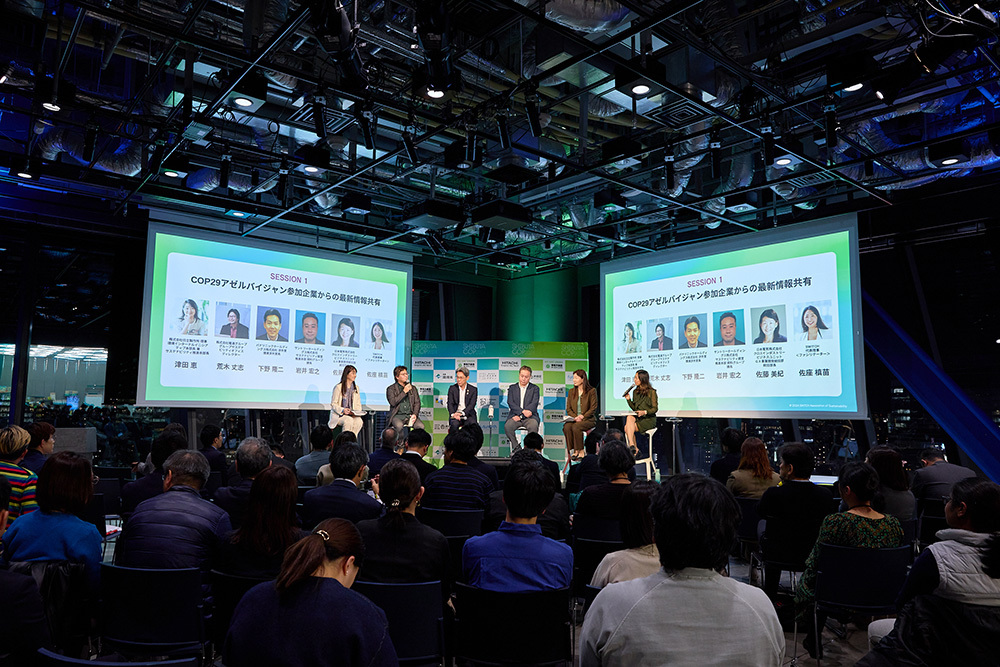
What Japanese Corporate Technology Holds in Store
Saza: We heard the Japan Pavilion was a huge success. Has the nature of expectations for Japan changed? Also, what aspects of Japan do many countries hold high expectations for?
Araki: Unfortunately, Japan wins the "Fossil Award" every year. But when you go on-site, you really feel the growing expectations for Japan's environmental technologies. The booth was constantly packed; I imagine it was quite demanding for everyone.
Sato: Hearing voices on-site, I sense great expectations for Japan's longstanding, advanced approach to preemptive disaster prevention. I feel Japan can make international contributions by properly fulfilling its role.
Saza: Living within Japan itself might make us blind to certain things. Hearing voices from outside could reveal many areas where Japan can contribute.
Tsuda: Speaking of which, we asked visitors to the Hitachi booth what they expected from Japanese technology. The overwhelming response was digital solutions. While energy and mobility were also mentioned, the strong focus on digital was a discovery for us. It's encouraging, and it reinforces that we need to work hard as a nation.
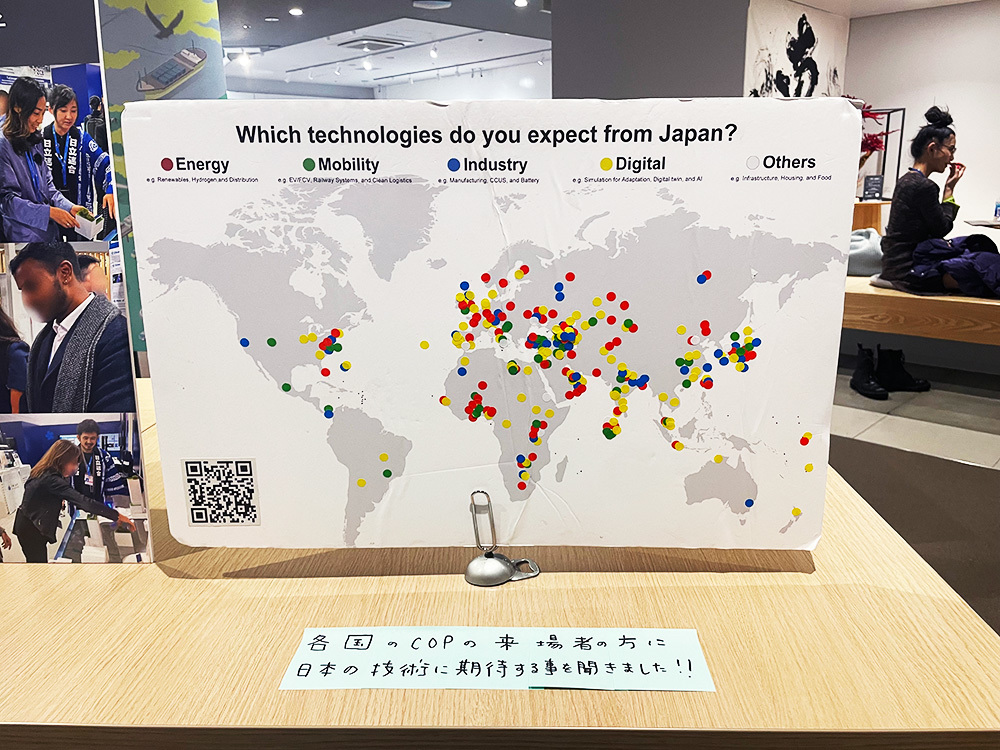
Saza: That was surprising, wasn't it? Hearing everyone's perspectives, I realized how crucial it is to meet diverse people globally. It also made me think that sharing the passion we gained from those encounters within Japan is something we participants must now take on. Finally, I'd like to hear your passionate messages.
Sato: What struck me most was when a team of experts stated that the warming curve up to 2040 is already set at this stage and won't change. We've entered a point where climate change is unavoidable. I wanted to convey to everyone that this isn't something we can afford to wait until 2050 to address.
Iwai: I completely agree that "mitigation" and "adaptation" are not opposing structures. COP seems somewhat politically exploited, intentionally creating divisions. I felt it's crucial for companies to focus on what needs to be done without getting caught up in that.
Shimono: COP is a gathering where people from around the world come together to discuss climate change countermeasures. Interacting with these individuals makes me feel my own spirit, buried in daily work, stir. Also, when engaging locally, I realize how embarrassing it is if you aren't prepared to discuss your company's goals and activities. I think COP is a place to recharge your own energy and a place to re-accelerate your company's efforts.
Araki: My environmental awakening came when I heard Severn Suzuki's speech at the Rio Earth Summit. She said something like, "Please stop destroying things we don't know how to restore." As we approach next year's COP30, a major milestone, we must constantly ask ourselves: Do we still carry that passion from Rio? Are we living up to the expectations held when the treaty was signed? I believe there's still much room for effort.
Tsuda: I'm reminded once again how crucial it is to access primary information. Being inside the country, you gradually develop biases. COP is the place where you can meet various stakeholders on the ground and hear their voices directly. There, I keenly feel the expectations placed on Japan and on Japanese technology. I truly hope we can work together with everyone to protect the planetary boundaries.
Saza: We got to hear about the fresh excitement right after COP29 ended. Thank you very much for today!

※1 Announced by the European Union's Copernicus Climate Change Service on November 7, 2024.
※2 COP... Abbreviation for Conference of the Parties. The most prominent example is the UN Framework Convention on Climate Change (UNFCCC) Conference of the Parties, attended by approximately 200 countries and organizations that signed the UNFCCC. COP3 was held in Kyoto in 1997, where the Kyoto Protocol was adopted. COP21 in 2015 adopted the Paris Agreement. The 29th such meeting, COP29, was held in Baku, the capital of Azerbaijan, from November 11 to 24, 2024.
※3 Planetary Boundaries... Also known as "Earth's Limits" or "Planetary Limits," this concept identifies thresholds that must not be exceeded for humanity to sustainably survive on Earth. It serves as a guideline to avoid catastrophic changes to the global environment.
Was this article helpful?
Newsletter registration is here
We select and publish important news every day
For inquiries about this article
Author

Web Dentsu Inc. News Editorial Department
Web Dentsu Inc. News Editorial Department
